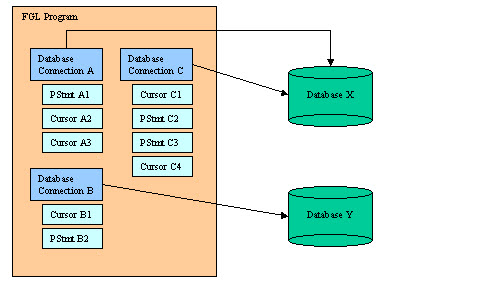Understanding database connections
This is an introduction to database connections.
A database connection is a session of work, opened by the program to communicate with a specific database server, in order to execute SQL statements as a specific user.
Before working with database connections, make sure you have properly installed and configured all software, using the correct database client software/environment, and BDL database driver. It is very important to understand database client settings, regarding user authentication as well as database client character set configuration.
Note that on some platforms like on mobile devices, Genero BDL includes the SQLite lightweight database library, which is the default. Therefore, when executing programs on these platforms, there is no need to install a database client software and configure the database driver for the runtime system.
A database connection is initiated with the DATABASE instruction, or with the CONNECT TO instruction: The CONNECT TO instruction allows
to specify database user credentials with the USER/USING clauses.
Multiple database connections can be established in a Genero BDL program.

The database user can be identified explicitly for each connection. Usually, the user is identified by a login and a password, or by using the authentication mechanism of the operating system (or even from a tier security system).
There are two kind of connection modes: unique-session and multi-session mode. When using the DATABASE and CLOSE
DATABASE instructions, the program is in unique-session mode. When using the
CONNECT TO, SET CONNECTION and DISCONNECT
instructions, the program is in multi-session mode.
Once connected to a database server, the program uses the current session to execute SQL statements in that context.